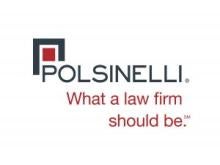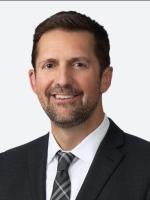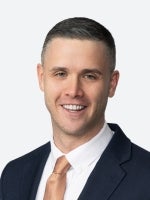Synopsis: In a recently issued final written decision, the Patent Trial and Appeal Board (the “Board”) found all challenged claims of U.S. Patent No.11,572,334 (“the ’334 patent”) unpatentable.1 The Board’s decision centered on two issues: (1) when does a prior art patent need to be enabled under § 102 of the America Invents Act (“AIA”) to qualify as an anticipatory reference and (2) as a matter of claim construction, is the claim phrase “the compound of Formula (III) is (Z)-endoxifen” limited to the free base form of endoxifen or does it also encompass other forms of endoxifen (i.e., salts, crystalline forms, solvates, etc.).
On the first point, the Board held that under the current AIA § 102, an anticipation reference must be enabling as of the earliest possible effective filing date of the challenged patent. That is a departure from the Federal Circuit’s precedent under pre-AIA § 102(b), which requires anticipation references to be enabling one year before the effective filing date of the challenged patent. The Board also clarified several procedural aspects related to enablement challenges of anticipation references, including that it is a Patent Owner’s initial burden to prove that an anticipation reference is not enabling, and the types of evidence that a Petitioner may rely on to rebut an enablement challenge.
Turning to claim construction, the Board initially construed the claim phrase “the compound of Formula (III) is (Z)-endoxifen” as encompassing various forms of (Z)-endoxifen in its institution decision. At trial, however, the Board requested additional briefing on the issue, and in its final written decision reversed course and construed the phrase as being limited to only the free base form of (Z)-endoxifen.
The Board’s holdings on these issues offer important guidance to both patent practitioners generally and Hatch-Waxman attorneys specifically.
I. Background
Atossa Therapeutics, Inc. (“Atossa” or “Patent Owner”) owns the ’334 patent, which is titled “Methods for Making and Using Endoxifen.” ’334 patent at Title. The ’334 patent explains that endoxifen is an active metabolite of a drug known as tamoxifen. Id., 2:36-38. “Tamoxifen is a selective estrogen receptor modulator that is used for the treatment of women with endocrine responsive breast cancer.” Id., 1:63-66.
The ’334 patent also explains that there are two isomers of endoxifen: (Z)-endoxifen and (E)-endoxifen. Id., 3:1-44. Of these two isomers, “[i]t is widely accepted that (Z)-endoxifen is the main active metabolite responsible for the clinical efficacy of tamoxifen.” Id., 2:36-38.
With those two points in mind, the ’334 patent discloses “industrially scalable methods of making (Z)-endoxifen or a salt thereof, crystalline forms of endoxif[e]n, and compositions comprising them” as well as “methods for treating hormone-dependent breast and hormone-dependent reproductive tract disorders.” Id., Abstract. The ’334 patent issued with 22 claims, including the following independent claims:
- An oral formulation comprising an endoxifen composition encapsulated in an enteric capsule, wherein the endoxifen composition comprises a compound of Formula (III):
wherein at least 90% by weight of the compound of Formula (III) is (Z)-endoxifen.
- A method of delivering (Z)-endoxifen to a subject, the method comprising administering to the subject an oral formulation comprising an endoxifen composition encapsulated in an enteric capsule, wherein the endoxifen composition comprises a compound of Formula (III):
wherein at least 90% by weight of the compound of Formula (III) is (Z)-endoxifen.
Id., claims 1 and 15.
Intas Pharmaceuticals Ltd. (“Intas” or “Petitioner”) markets endoxifen under the brand name Zonalta® in India where it is approved “[f]or the acute treatment of manic episodes with or without mixed features of Bipolar I disorder.”2 After the ’334 patent issued on February 7, 2023, Intas filed a petition requesting post-grant review (“PGR”) of all issued claims of the ’334 patent based on one anticipation ground and five separate obviousness grounds. PGR2023-00043, Paper 37 at 6. All six grounds relied on U.S. Patent No. 9,333,190 (“Ahmad”) as a prior art reference. Id.
II. The Board’s Final Written Decision
- Anticipation references under AIA § 102 must be enabled as of the effective filing date of the challenged patent
The Board began its decision by noting, among other things, that because the ’334 patent’s earliest possible effective filing date is September 11, 2017, it is subject to the provisions of the AIA. Id. at 7. Likewise, the provisions of AIA § 102 were applied to Petitioner’s anticipation and obviousness grounds. Id., 15-20. That became highly relevant to the Board’s decision because although it has long been a requirement that “[a]n anticipatory reference must also be enabling,” there was “no controlling case law specifically addressing the timeframe of enablement of an anticipatory reference under the current AIA § 102.” Id., 15, 18-19.
The Board explained that “under pre-AIA § 102(b), the Federal Circuit held that the relevant timeframe for determining whether prior art reference is enabling is one year before the effective filing date of the patent-in-suit.” Id., 18 (citing Bristol-Myers Squibb Co. v. Ben Venue Lab’ys, Inc., 246 F.3d 1368, 1379 (Fed. Cir. 2001); In re Samour, 571 F.2d 559, 562–63 (CCPA 1978)). In other words, under pre-AIA § 102(b), a prior art reference must be enabling to a person of ordinary skill in the art (“POSA”) at least one year before the priority date of the challenged patent. That requirement was borne out of the one-year bar date of pre-AIA § 102(b). Id., 19.
Turning to the requirements of AIA § 102, the Board held that “[a]lthough AIA § 102(b)(1) provides for a one-year grace period under certain circumstances, that exception does not apply to the facts of this case.” Id. As a result, the Board agreed with Petitioner and “determine[d] that Ahmad need only be enabling prior to the earliest possible effective filing date of the ’334 Patent, i.e., on September 11, 2017.” Id.
Finally, Patent Owner argued that “[p]ost-effective filing date evidence offered to illuminate the post-effective filing date state of the art,” and to establish that an anticipatory reference is enabled, “is improper.” Id. (quoting Patent Owner Sur-reply at 12). The Board disagreed and clarified that under Bristol-Myers Squibb, “the Federal Circuit expressly held that ‘[e]nablement of an anticipatory reference may be demonstrated by a later reference.’” Id. (quoting 246 F.3d at 1379 (citing Donohue, 766 F.2d at 532; Samour, 571 F.2d at 562)). And the Board made clear that it is “Patent Owner’s burden to establish by a preponderance of the evidence that [an anticipatory reference] is not enabling,” consistent with the Federal Circuit’s prior holdings on that issue. Id., 17.
- Application of the Board’s AIA § 102 enablement holding to Petitioner’s anticipation ground
Applying its new rule to Petitioner’s grounds, the Board found the claims anticipated. Notably, Patent Owner did not contest the fact that the prior art reference (Ahmad) disclosed every limitation of the challenged claims of the ’334 patent. Id., 20. Rather, Patent Owner argued that Ahmad did not enable the claimed invention as required by AIA § 102. Id. “Specifically, Patent Owner assert[ed] that Ahmad [did] not teach a POSA how to achieve 90% pure (Z)-endoxifen, as required by each of the claims.” Id. “Petitioner argue[d] that Ahmad [was] enabling because using 90% pure (Z)-endoxifen was in the public’s possession, as shown” by other references. Id., 20-21. The Board agreed with Petitioner and held that because Ahmad sufficiently enabled the claims, Patent Owner failed to carry its burden to prove that Ahmad was not enabling. Id., 21, 31.
The Board distinguished this case from two Federal Circuit cases relied on by Patent Owner: Forest Lab’ys, Inc. v. Ivax Pharms., Inc., 501 F.3d 1263 (Fed. Cir. 2007) and Sanofi-Synthelabo v. Apotex, Inc., 550 F.3d 1075 (Fed. Cir. 2008). In those cases, the Federal Circuit held that the prior art references did not enable a POSA to make substantially pure isomers (or enantiomers) of the drug compounds recited in the challenged patents. 501 F.3d at 1263; 550 F.3d at 1075. Here, however, the Board found that Ahmad, along with other references in the prior art, taught a POSA how to separate the (E)- and (Z)-isomers of endoxifen, and thus how to make a composition having 90 % pure (Z)-endoxifen. PGR2023-00043, Paper 37 at 21-31.
The Board also rejected Patent Owner’s argument that because “Ahmad does not contain any working examples of the synthetic method that result in a 90% pure (Z)-endoxifen,” the reference is not enabled. Id., 23. Rather, “as Petitioner note[d], the Federal Circuit does not require actual performance to be enabling.” Id. (citing Bristol-Myers, 246 F.3d at 1379). In addition, the Board agreed with Petitioner that two other references demonstrated that a POSA would have been enabled by Ahmad as of the effective filing date. Id., 20-25. While some of those references were published after Ahmad, Petitioner was allowed to rely on those references to demonstrate what was known by a POSA as of that effective filing date. Id.
The Board also rejected several additional technical and scientific arguments that Patent Owner presented, and briefly addressed the Wands factors. Id., 29-31. The Board concluded that “Patent Owner has not shown by a preponderance of the evidence that a POSA reading Ahmad would have been unable to make 90% pure (Z)-endoxifen.” Id., 29. Thus, because Ahmad enabled a POSA to make 90% pure (Z)-endoxifen (i.e., the free base form of (Z)-endoxifen), and because it disclosed every limitation of the challenged claims, those claims were found unpatentable as anticipated by Ahmad.
- The claim phrase “the compound of Formula (III) is (Z)-endoxifen” construed as limited to the free base form of (Z)-endoxifen
Another important issue addressed in the Board’s decision was how to construe the claim phrase “the compound of Formula (III) is (Z)-endoxifen.” PGR2023-00043, Paper 37 at 10-13. The Board initially “construed sua sponte” this claim phrase in its Institution Decision because they “disagreed with Patent Owner’s argument that the phrase is limited to the free base form of (Z)-endoxifen.” Id., 10. Instead, the Board initially determined “that for purposes of the Institution Decision, the construction of ‘the compound of Formula (III) is (Z)-endoxifen’ includes the polymorphic, salt, free base, co-crystal and solvate forms of (Z)-endoxifen.” Id.
After post-trial briefing on this issue, requested by the Board “[d]uring trial,” the Board reversed course and held that “the intrinsic evidence supports construing the limitation ‘the compound of Formula (III) is (Z)-endoxifen’ to be limited to the (Z)-endoxifen free base form and excludes the salt and solvate forms.” Id., 10, 13. While the Board acknowledged that the specification broadly defines “the compound of Formula (III)” to encompass various forms of endoxifen (i.e., polymorphic forms, salts, etc.), “[t]he claim further narrows ‘the compound of formula (III)’ to ‘(Z)-endoxifen.’” Id., 12. And the Board explained that the question was “whether ‘(Z)-endoxifen’ should be construed broadly to include the free base and salt form or if it should be limited to its free base form.” Id.
The Board reasoned that “[w]hen read as a whole … the Specification consistently identifies (Z)-endoxifen salts as separate from (Z)-endoxifen.” Id., 13. Specifically, “the ’334 Patent refers to ‘(Z)-endoxifen and salts thereof,’ suggesting that references to ‘(Z)-endoxifen’ alone do not include the salt forms unless expressly identified as such.” Id. And the Board noted that the specification’s focus was on “preparations of endoxifen free base that are … at least 90% (Z)-endoxifen free base.” Id., 13 (emphasis added) (quoting ’334 patent at 83:43-45).
In view of “the language of the claims and the Specification as a whole,” the Board determined “that the intrinsic evidence supports construing the limitation ‘the compound of Formula (III) is (Z)-endoxifen’ to be limited to the (Z)-endoxifen free base form and excludes the salt and solvate forms.” Id.
III. Conclusion and Takeaways
The Board’s decision provides important guidance on several issues, most notably that a prior art patent must be enabling as of the earliest effective filing date of the challenged patent to serve as an anticipatory reference under AIA § 102. It is worth noting, however, that the Board implied that there may be situations under AIA § 102(b)(1), which “provides for a one-year grace period under certain circumstances,” in which an anticipatory reference may need to be enabled before the effective filing date of the challenged patent. Id., 19. Relatedly, the Board’s decision reaffirms that if a patent owner challenges whether an anticipation reference is enabled, the petitioner may rely on other references, including later-published references, to overcome the patent owner’s enablement challenge.
This decision also highlights the importance of claim construction in the context of patents that claim chemical compounds by structure and/or name. Indeed, whether a claim is limited to only the free base form of a compound (as was the case here) or if it also encompasses other forms of the compound (i.e., salts, polymorphs, etc.) can be critically important to both infringement and invalidity issues in litigation. While the Board determined that the ’334 patent was limited to the free base form of (Z)-endoxifen, it was admittedly a close call. Both patent prosecutors and litigators should review the Board’s decision here when considering whether a claimed chemical compound is limited to a particular form or if it more broadly encompasses multiple forms of the compound.
[1] Intas Pharms. Ltd. v. Atossa Therapeutics, Inc., PGR2023-00043, Paper 37 (PTAB Jan. 29, 2025)
[2] List of new drugs approved in the year 2019 till date. Central Drugs Standard Control Organization, Government of India. Available at: https:// cdsco.gov.in/opencms/resources/UploadCDSCOWeb/2018/ UploadApprovalNewDrugs/newdrugaapproaldec2019.pdf.





 />i
/>i

